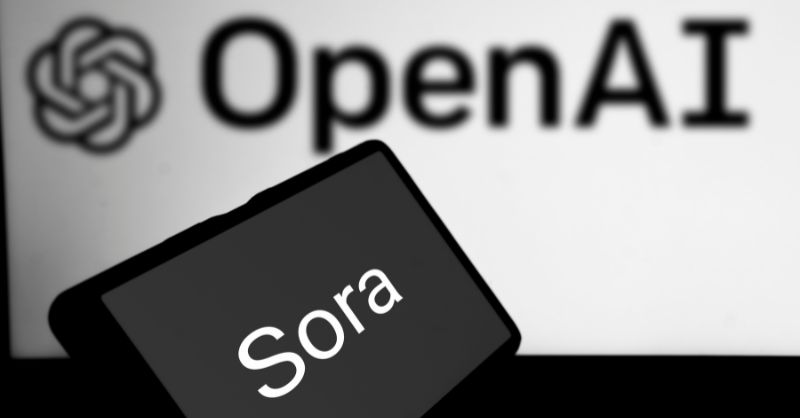After recent news about OpenAI’s CEO, Sam Altman, setting his sights on a colossal undertaking: a multi-trillion dollar global initiative to revamp the semiconductor industry. His yet another AI child, Sora, is making the rounds again. The video OpenAI released on youtube showed how great the AI generated video was. The quality, effects and animation were simply not something anyone would say was generated by an AI tool with a simple prompt.
Imagine describing an idea, and within seconds, seeing it come to life as a video. This is the power of Sora, a groundbreaking AI model that can generate high-fidelity videos based on user prompts. This is somewhat like ChatGPT but for video and to people who are not aware, both are owned by OpenAI.
And, for such a huge task of processing the prompts on the fly one does require a monumental processing power. Driven by the limitations of current AI chips hindering OpenAI’s growth, Altman is reportedly in discussions with potential investors, including the United Arab Emirates government, to raise a staggering $5-7 trillion for this ambitious project. This initiative, as reported by The Wall Street Journal, aims to significantly increase global chip-building capacity, potentially impacting a wide range of industries reliant on this crucial technology.
Talking about Sora again, it’s simply a remarkable feat of AI. The video released by the company showcasing the power of the tool, doesn’t have any audio to it. That’s because Sora cannot do audio and video both at this point in time. Maybe that’s another video release we might be waiting for in the near future.
What is Sora and how does it work?
Sora’s magic lies in a unique approach. It transforms diverse video data into a unified format, enabling large-scale training. The model then leverages “diffusion transformers,” a powerful technique that improves with increased computational resources.
Unlike traditional approaches, Sora trains on video data at its original size, leading to better framing and composition in generated content. Users can input text prompts, and Sora translates them into detailed captions using GPT, ensuring videos align with their vision. Sora’s versatility extends beyond text prompts, allowing it to work with images and videos, enabling tasks like animating still images, extending video clips, and creating looping videos.
Sora’s potential goes beyond simply generating videos. As the model scales, it exhibits fascinating emergent capabilities. Objects maintain a consistent appearance from different angles (3D consistency), actions and objects remain logically connected throughout the video (long-range coherence), objects persist even when temporarily hidden (object permanence), and Sora holds the potential to simulate actions and digital worlds in the future.
When will you get to use AI video generator tool
The current release of the text-to-video model adopts a limited access strategy, targeting policymakers, educators, and artists. This approach serves two primary purposes:
Security and Safety: Restricted access allows for careful monitoring and mitigation of any potential risks associated with the AI model.
Enhanced Capabilities: By focusing on specific user groups, the company aims to gather valuable feedback and utilise it to refine and improve the model’s functionalities to better serve creative professionals in the future.
Furthermore, the model’s accessibility extends to red teaming exercises, enabling the company to proactively identify and address potential vulnerabilities that could lead to the generation of misinformation, biassed content, or hateful material. This proactive approach demonstrates the company’s commitment to responsible AI development and deployment.
While the process may take a bit while, OpenAI has not specified a release timeline as yet.
How safe will Sora be?
To ensure responsible deployment, Sora will undergo rigorous testing with experts in areas like misinformation and bias. The company website says that they are building detection tools to identify AI-generated content and plan to include metadata flagging its origin.
Additionally, existing safety measures from DALL-E 3, like text and image classifiers, will be applied to filter out harmful content and ensure adherence to usage policies.
OpenAI is in open dialogue with policymakers, educators, and artists to further inform responsible deployment and identify positive applications for this powerful technology. The company says that they acknowledge the need for continuous learning and adaptation as they strive to build and release increasingly safe AI systems.
Ethical, public safety, job displacement dilemma
Artificial Intelligence (AI) has advanced rapidly with technologies like OpenAI’s Sora, capable of creating realistic videos based on text prompts. The technology extends beyond animation and filmmaking, potentially impacting various industries, such as photography, videography, and animation, and not just in terms of talent but also including manufacturers of cameras and hardware. Sora’s creations are remarkably lifelike, challenging traditional roles in content creation.
The implications of AI-generated content are far-reaching. Jobs in videography, animation, and specialty industries like camera and lens manufacturing may be at risk. The realistic nature of AI videos poses challenges, such as potential job displacement, lower incomes, and industry consolidation.
Despite concerns, there are positive aspects, such as the potential for fan-made content and the emergence of new content creators. Safeguards like watermarks and limited access to technology aim to address concerns about misuse, but challenges persist. The continuous improvement of AI technology raises questions about its impact on various industries and the global economy.
The transformative power of AI, as demonstrated by Sora, prompts reflections on the future of work, creativity, and the potential consequences for entire industries. The evolving industry invites a discussion on how society can undergo these changes and rip the benefits of AI while mitigating potential challenges.















